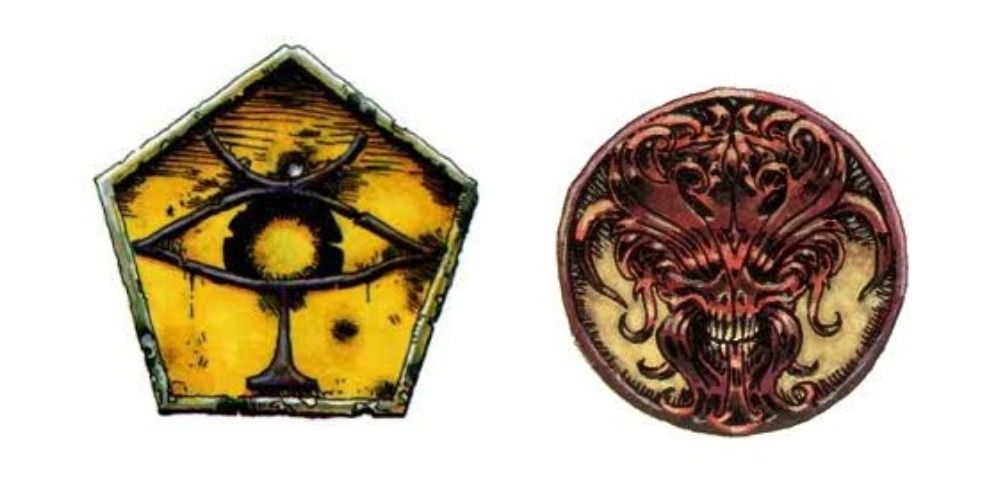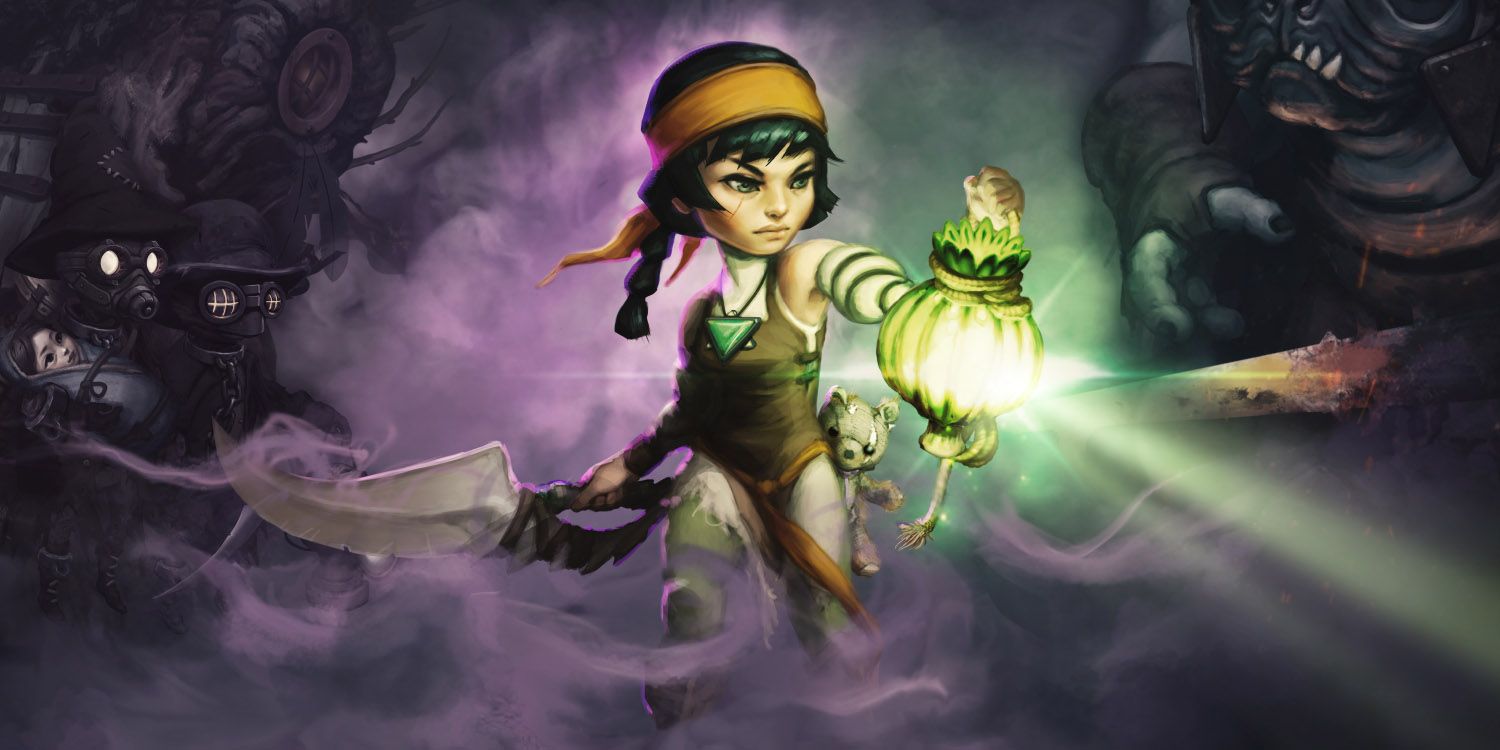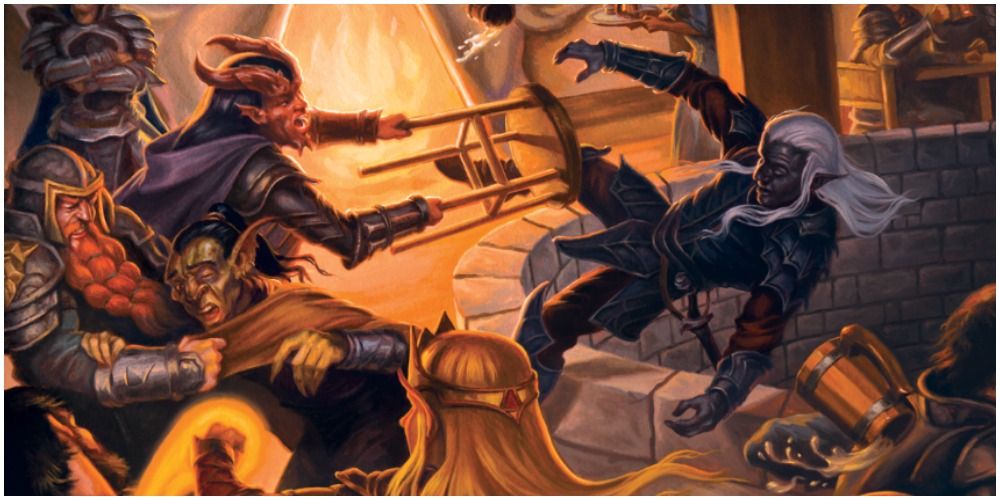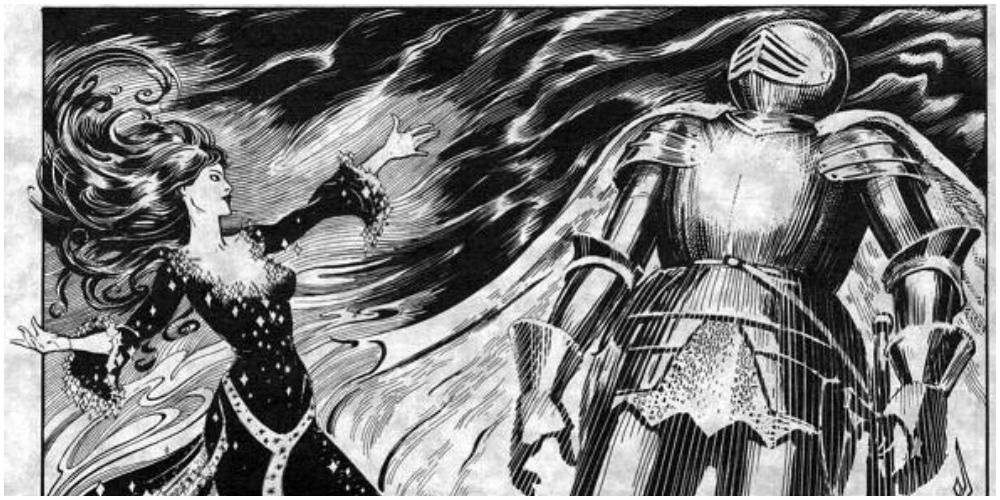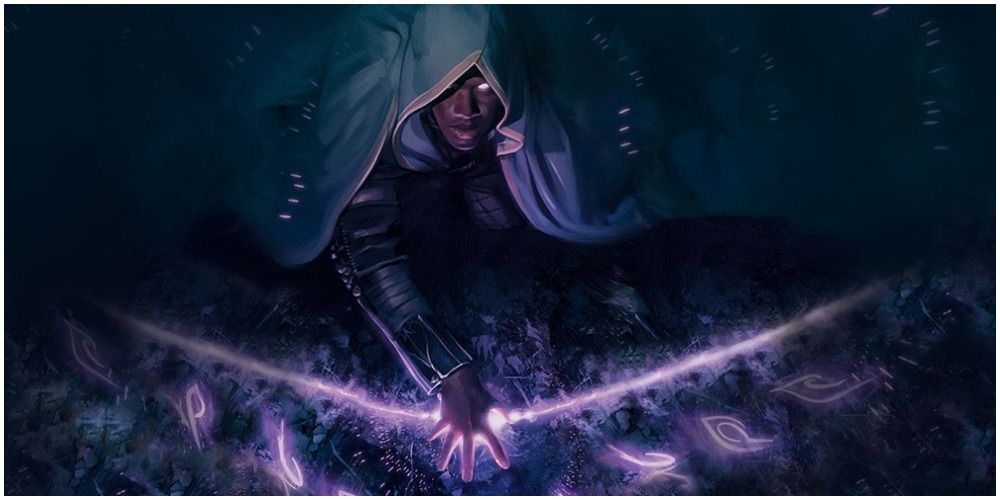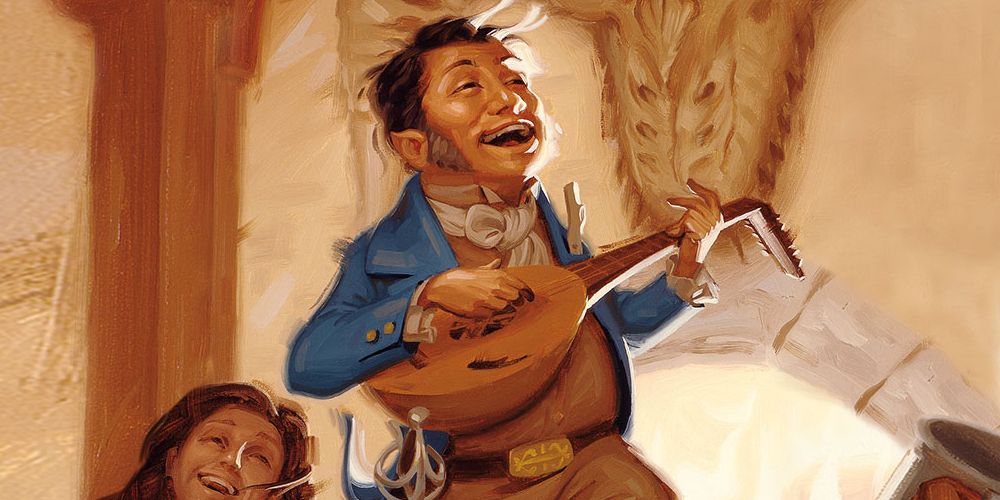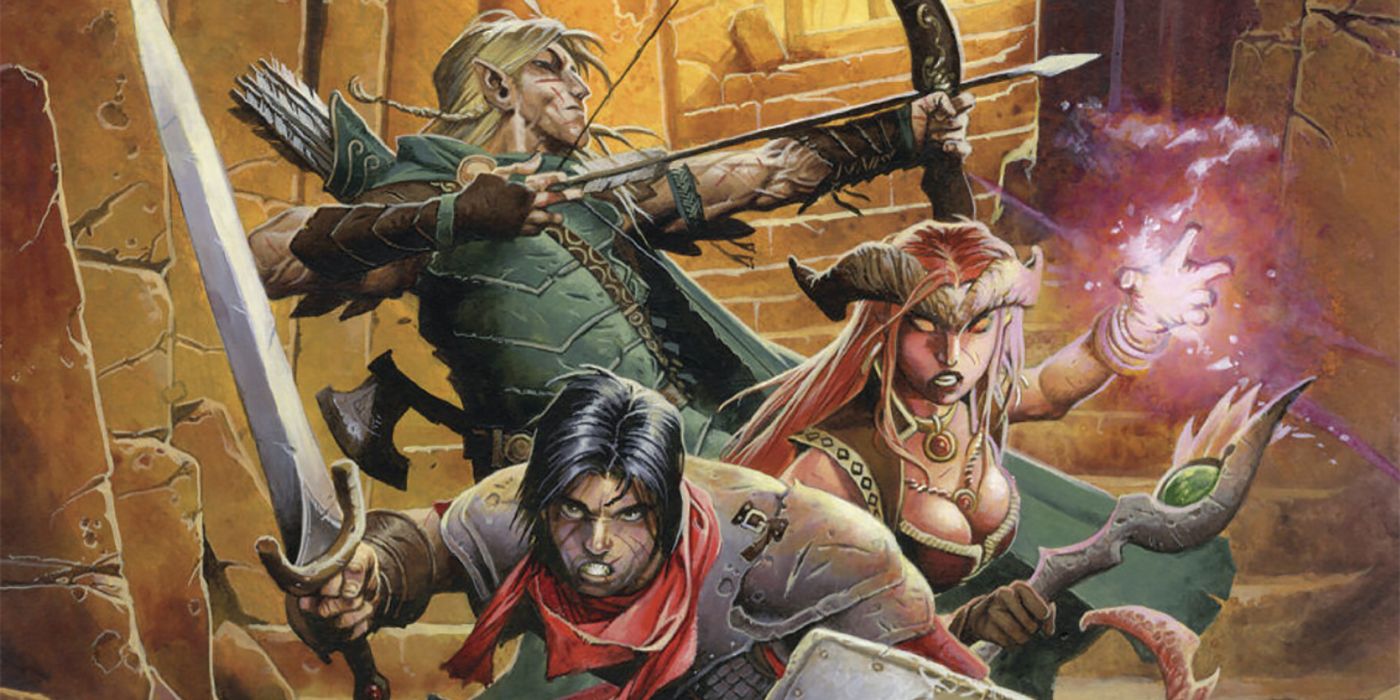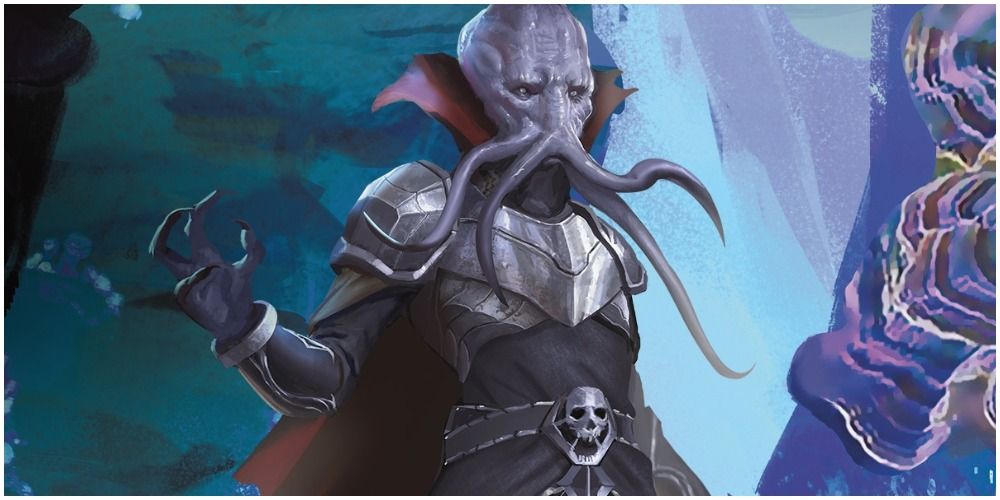Magic is the most powerful force in Dungeons & Dragons, as it provides all spellcasters from lowly shamans to the gods themselves with the power that they need to rule those around them. One of the most frustrating kinds of foes you can encounter in Dungeons & Dragons is enemy spellcasters, due to their ability to turn you against your allies or blow you to pieces after to a single failed saving throw.
The drawback to magic is that you need to follow certain rules in order to be able to use it. The vast majority of spells in Dungeons & Dragons require you to be able to speak, to be able to freely move both of your arms, and to possess a material component that is consumed upon completion of the spell. Enemy spellcasters might seem like some of the most frustrating foes in the world to fight, but there are tactics and tricks that you can use to take them down as if they were any other threat in the game.
We are here today to reveal the secrets of overcoming spellcasters in Dungeons & Dragons - from calling in some help from the professional wrestlers of the animal kingdom to abusing one of the most broken spells in the game.
With that said, here are The 20 Most Effective Tricks To Beat Spellcasters In Dungeons & Dragons!
20. Summon Grappling Monsters Like Apes & Bears
The wisest spellcasters know that they won't last long in a physical fight, which is why they cloak themselves in protective spells and keep a lot of strong allies around to act as interference while they cast their spells. The vast majority of spells in Dungeons & Dragons require the caster to be able to move their arms, so most spellcasters will lose access to their powers when they are grappled.
One of the most effective ways to grapple an enemy in the third edition of Dungeons & Dragons is to use the summon monster or summon nature's ally spells to summon a creature with a high grapple check next to the enemy, which is something that you can do from long range. Apes and bears are some of the most effective low-level grapplers that can be summoned, and even if they fail, the spellcaster will still have to respond to the wild animal that is standing next to them.
19. Use Silence On Allies & Throwable Items
The version of the silence spell that appears in the current edition of Dungeons & Dragons might seem overpowered, as it prevents any spells with a verbal component being cast within a twenty foot sphere without requiring a saving throw, but it's actually far weaker than the version of the spell that appeared in previous editions of Dungeons & Dragons.
The reason why silence was so broken in the second and third editions of Dungeons & Dragons was due to the fact that it could be cast on objects, allowing its effect to be moved. One of the best anti-spellcaster tactics that existed in the older editions of Dungeons & Dragons was casting silence on throwable items (like a stone) and bombarding the enemy with them. This tactic also worked with allies who didn't mind getting close to enemy wizards in combat.
18. Become Best Friends With The Church Of Boccob & Wee Jas
Counterspells are tricky to pull off in the third edition of Dungeons & Dragons, due to how several requirements need to be met before you can use them. One way thar you can avoid a lot of the hassle with preparing counterspells is through using the rules presented in the Complete Champion, where you can receive blessings for helping out the church.
For characters who live in Oerth from the Greyhawk setting - if you help out the churches of Boccob (the god of magic) and Wee Jas (the goddess of mortality), then you can earn the ability to perform a free counterspell once per day without needing a readied action or the correct prepared spell.
17. Use Dualward For Free Counterspells
One of the main reasons why counterspells were unpopular in the third edition of Dungeons & Dragons was due to the fact that it required a readied action in order to be pulled off, which meant that a lot of players decided to just try their luck with an offensive spell and hoped to deal with the enemy by causing damage.
The Complete Arcane offered a far easier way to perform counterspells with the aid of a 5th level arcane spell called duelward. Duelward allows you to perform a counterspell as an immediate action, which means that you can attempt it on your opponent's turn, while also granting you a +4 bonus to the Spellcraft check required to determine the spell that is being cast.
16. Use Protection From Evil For Immunity From The Enchantment School
Magic can be used to damage the body, such as with spells like fireball and magic missile, but the most horrifying spells of all are the ones that harm the mind and they mostly belong to the school of enchantment. Enchanters and other spellcasters who dabble in the school can use spells like confusion, dominate person, and suggestion to steal your mind or make you turn on your allies, which is usually more disruptive than being by offensive spells.
The entire charm and compulsion aspects of the enchantment school can be easily undone by the protection from evil spell. If your enemy has an evil alignment, then they can't control your mind using magic so long as protection from evil is in effect, which means that a 1st level spell offers total protection against much higher level spells.
15. Use Obscuring Items & Spells To Prevent Line Of Sight
The ability to speak and to move your arms are vital components of being able to cast spells, but it's just as important to be able to see. In order to be able to target someone with a spell, you need to be able to see them, with the exception of area-of-effect spells, as you can use them on the area around your target.
A surprising amount of a spellcaster's repertoire can be shut down by preventing their line-of-sight, which can be done with basic spells like fog cloud or with smokesticks that can be thrown or fired into combat. This tactic is especially effective when coupled with allies that possess blindsight or with summoned animals and monsters that possess tremorsense, as they can engage the spellcaster without any penalties.
14. Use Nets To Prevent Spells With Somatic Components (Which Is Practically All Of Them)
It's tempting to try and rush a spellcaster so that you can engage them in melee combat, but there was another highly effective option you could use in combat that could only be done at close range. In the third edition of Dungeons & Dragons, a net could only be thrown a maximum of ten feet. It's worth getting that close to the enemy, as a net only requires a ranged touch attack and it offers several ways to thwart a spellcaster.
When an enemy is hit with a net, they can't cast any spells without passing a DC 15 Concentration check each time. In order to break free from the net, they need to either pass a DC 20 Escape Artist check, a DC 25 Strength check, or resort to melee weapons and hope they can cut through it with a sharp weapon before you pounce on them.
13. Create The Perfect Anti-Spellcaster By Becoming An Initiate Of Mystra
By far the most effective way of dealing with spellcasters in Dungeons & Dragons is to use a spell that creates an area filled with antimagic, as it prevents all magic from being used. Antimagic is a double-edged sword, however, as you will also be unable to use magic while in the same area.
The Player's Guide to Faerun offered a way for players to weaponize antimagic, as the Initiate of Mystra feat allowed clerics of the goddess of magic to attempt to cast spells within an antimagic area. They still need to pass a fairly easy caster level check each time they cast a spell, but this is a small penalty compared to the options that are opened up by being able to play a spellcaster who can still use magic within an antimagic field.
12. Aim For The Focus
A lot of spells in Dungeons & Dragons require the use of components, which are sometimes random items (like the bat guano and sulphur used for fireball) and are sometimes expensive gemstones that are consumed by the spell. The current edition of Dungeons & Dragons allows spellcasters to use an item called a focus in place of components without a monetary value, meaning that arcane casters can now use items like wands, bards can use instruments, clerics can use their holy symbol, and druids can use items like a totem to aid their spells.
The problem with using a focus is that a spellcaster can lose access to a significant portion of their repertoire if they are damaged. This means that focuses can be targeted by the likes of the Battle Master's Disarming Strike ability, the shatter spell, the thunderwave spell, and even heat metal if they are made of metal.
11. Mass-Produce Scrolls Of Protection From Magic
The vast majority of magic scrolls that you will encounter in Dungeons & Dragons will have spells written on them, but Advanced Dungeons & Dragons had protection scrolls that could be used by anyone, which offered temporary resistance to certain kinds of damage. The protection from magic scroll was easily the best of the group, as it offered total protection from all forms of magic for 5d6 rounds.
The Player's Options: Spells and Magic book offered rules for creating magical items in Advanced Dungeons & Dragons and it was possible to mass-produce protection from magic scrolls, so long as you have access to the antimagic shell spell. The only caveat is that the process requires a rare ingredient that is determined by the dungeon master and they likely won't make it easy for you to find them.
10. Combine Tasha's Laughter With Abilities & Spells That Affect Saving Throws
The rules regarding concentration on spells in the current edition of Dungeons & Dragons were added to prevent players from abusing certain spells, but there are still a few that can be exploited by the player.
Tasha's laughter forces anyone who fails a saving throw to fall into fits of laughter where they cannot do anything except giggle. The target is able to make the saving throw again at the end of each of their turns, but it's still a devastating spell, as a single failed saving throw causes the enemy to lose a turn and make themselves prone. The effect of Tasha's laughter is so good that it's best reserved for enemy spellcasters and works best when combined with spells that affect the enemy's saving throws, such as bane or bestow curse.
9. Use A Thunderstone To Deafen The Enemy
A spellcaster often needs to be able to speak in order to be able to use magic, but deafening them can also be an effective way of preventing them from being able to correctly use their spells. One of the most effective ways of deafening a spellcaster in the third edition of Dungeons & Dragons is with an item called a thunderstone, which can be purchased for thirty gold pieces each.
A thunderstone doesn't deal direct damage, but it does cause a DC 15 Fortitude saving throw which results in becoming deaf for an hour if failed. When a spellcaster is deafened, they have a 20% chance of their miscasting their spells. You also have the benefit of thunderstones being used by anyone who can throw, making them a viable option for any party member.
8. Learn The Three Feats From Complete Arcane To Screw Over Spellcasters In Melee Combat
Complete Arcane was a sourcebook for the third edition of Dungeons & Dragons that offered all kinds of new options for spellcasters, but it also made it easy for players to take them down in combat. There are three feats in Complete Arcane that will make it incredibly easy for warriors to deal with spellcasters in melee combat.
The Mage Slayer feat prevents spellcasters from being able to cast defensively, which means that they will always take attacks of opportunity from you if they try to cast spells in melee combat. The Pierce Magical Concealment and Pierce Magical Protection feats allow you to ignore the effects of almost every defensive spell in the game, which means that most arcane spellcasters will be utterly defenseless if you can get close to them.
7. Track Down A Ring Of Clumsiness
Cursed magical items can be a nightmare to deal with, especially as most of them have the ability to conceal their true nature until it's too late. Once a cursed item has been removed, it's possible to use them against your enemies.
The ring of clumsiness grants a 20% spell failure chance on arcane spells, which means that it will be really helpful if you can get it onto the finger of your enemy, such as with the mage hand spell. There are several abilities and spells you could use to put the ring of clumsiness onto an enemy, but you could also be sneaky and create a situation where they discover it for themselves. Cursed items have a way of looking appealing, so most enemies would fall for the trick.
6. Use Wall Of Force As An Anti-Spell Prison
Wall of force has always been one of the best defensive spells in the game, due to how difficult it can be to break through the wall. The version of wall of force that appears in the current edition of Dungeons & Dragons was more powerful than anyone realized, as one of the creators of the edition confirmed on Twitter that spells cannot pass through the wall, even though it's invisible.
This ruling means that wall of force can be used as an effective means of containing a spellcaster during combat, as it prevents them from being able to use any offensive spells and will force them to try and escape from the barrier, which may be impossible depending on the spells they have available at the time.
5. Use Bestow Curse To Steal Their Spellcasting Ability
Curses are a popular aspect of fantasy fiction and they crop up in Dungeons & Dragons adventures from time to time. It's possible for spellcasters to curse their enemies using bestow curse, but it's often overlooked due to how many players prefer damaging spells over debuffs that only affect a single enemy.
The third edition version of bestow curse is worth a second look, as you can lower the enemy's primary spellcasting stat by six points, which means that they will almost certainly lose all of their bonus spells and the saving throw to beat any remaining spells will become very easy to pass. Bestow curse is also a nightmare to remove and can be effective against recurring villains who lack ready access to a powerful cleric.
4. Use Haste To Dispose Of Elderly Wizards
The haste spell had an unusual drawback in Advanced Dungeons & Dragons, as it aged the recipient of the spell by a year, which was likely introduced to prevent people from abusing the spell by using it over and over again.
You can use haste as a means of disposing of your enemy, especially as it doesn't provide a saving throw. The fact that you fight a lot of elderly wizards in Dungeons & Dragons means that an extra year might be enough to push them over their maximum lifespan. The increased age brought on by haste also forces a System Shock check which may instantly dispose of the spellcaster if they fail.
3. Give Your Familiar The Ability To Counterspell
There are many sorcerers and wizards who form a magical bond with an animal and take them as a familiar. The familiar can have some effective uses in combat, but most spellcasters are loathe to put them in dangerous situations.
One possible use for familiars is to use them as a backup counterspell-user, as the imbue familiar with spell ability spell from Complete Arcane allows you to transfer the dispel magic spell to your familiar, which has the same strength as if you had cast it. This means that you can use your telepathic link with your familiar to prepare a second counterspell attempt if needed.
2. Use An Ability Or Spell That Inflicts The Nausea Status Effect
One of the most devastating status effects you can inflict on a spellcaster in the third edition of Dungeons & Dragons is the nausea effect, as they are prevented from casting or concentrating on spells while nauseated. The third level of arcane spells is filled with some of the best spells in the game, such as dispel magic, fireball, fly, and haste, which means that stinking cloud is often overlooked.
Stinking cloud doesn't deal damage, but it inflicts the nauseated condition on enemies for 1d4+1 rounds after they leave the cloud. This means that if a spellcaster fails a Fortitude save when inside of the cloud, then they will lose the ability to cast spells for several rounds and can only take single move actions while your party wails on them.
1. Seal Away Their Power With The Feeblemind Spell
There are spells in Dungeons & Dragons that can cause people to explode from the inside out, while others rip the soul from the body and trap it in a container from which there may be no escape. One of the most horrifying spells to spellcasters is feeblemind, which is tailor-made for their destruction. Feeblemind drops the Charisma and Intelligence stats of a creature to one, regardless of what it was before. If you fail a single saving throw, then feeblemind turns you into someone who cannot speak or think.
What makes the feeblemind spell so scary is that spellcasters suffer a minus-four penalty to a saving throw that will destroy their entire being. The other reason why feeblemind is so effective is that there are only four spells that can break its effect - heal, limited wish, miracle, and wish, three of which are some of the most powerful spells in the game. A single feeblemind spell has the power to bring any bard, cleric, druid, sorcerer, or wizard to their knees with one failed saving throw.
---
Are there any other ways to defeat spellcasters in Dungeons & Dragons? Have your say in the comments section!




